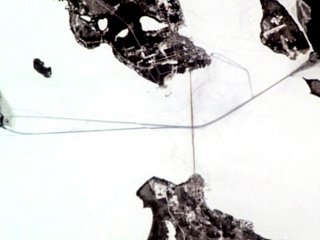In history

The Round Island Channel has been in active use since before the arrival of European explorers. With the construction of Fort Mackinac in 1780–1781, the channel became a link in the logistics chain operated by the British Army to supply the fort.
With the discovery of significant hematite mines in northern Minnesota in the late 1800s, and the construction of steel mills shortly after 1900 along the shores of southern Lake Michigan in and around Gary, Indiana, the Round Island Channel became an essential element in one of the most significant commodity supply pipelines of the Great Lakes.
The Round Island Channel is lit by Round Island Light, an 1895 lighthouse, and by Round Island Passage Light, a 1948 light which has a Racon.
The channel is maintained to a project depth of 30 feet (9.1 meters) in line with U.S.-Canadian agreements governing the operation of Great Lakes navigable waterways and the St. Lawrence Seaway. This depth is sufficient to provide safe water for lake freighters as massive as 1,000 feet (300 m) long. Buoys and the lights delineate the channel today. [1]